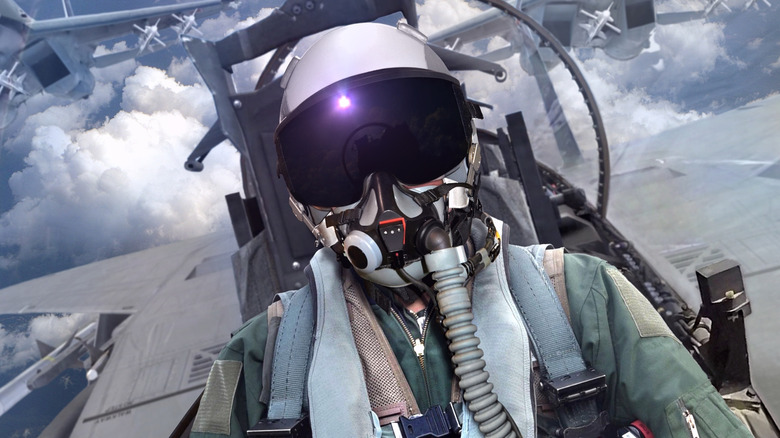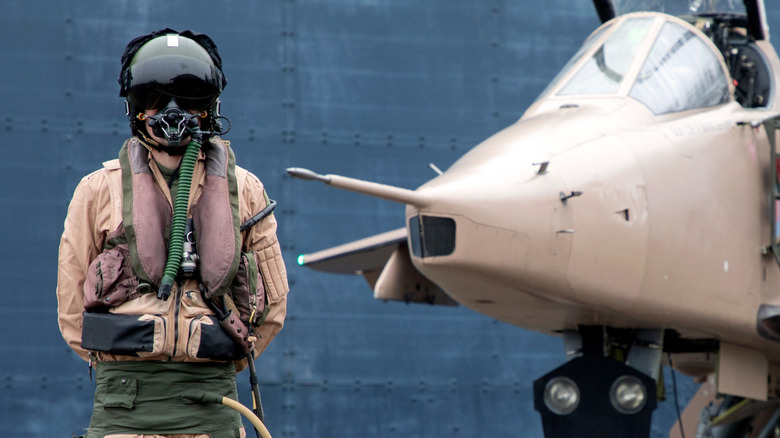Here's What Could Happen If A Fighter Pilot Took Off Their Mask
Hollywood can exaggerate to the point of lunacy, and that's especially true of many military films. But when you see an actor remove his mask while pretending to fly a fighter jet, it may not actually be the real-world emergency you think it is. A pilot has to be flying in the right conditions to remain safe without the mask, but it can be done.
The key is that a pilot must maintain an elevation of 25,000 feet or lower, which many fighter jets often do. At that altitude, a pilot could take off his oxygen mask for a short amount of time without any real issue. He could even drink or eat, as extended missions would require him to stay hydrated. But it would be up to the pilot to gauge how he's feeling in the moment, as a lack of oxygen could eventually cause exhaustion, creating a dangerous situation. That's because the pressure outside a pilot's lungs is much lower than inside, making the mask a vital piece of essential equipment.
But if a pilot took off his mask above 25,000 feet, the end result would be a condition called hypoxia. Hypoxia happens when the brain isn't getting enough oxygen, and it can actually occur at just 10,000 feet above sea level. It begins with a slight tingling in the extremities, eventually leading to dizziness. When this happens, a pilot can no longer think clearly, and he could even pass out. At that point, "dangerous" can become deadly.
From fighter jets to spaceflight
Oxygen masks were rare and specialized pieces of equipment for fighter pilots in World War I, and thus not readily available. But as combat missions increased, so too did the need for masks, and the technology quickly evolved. With the escalation of World War II in the 1940s, oxygen masks eventually became the standard, and all fighter jet pilots needed to wear them. This change came as the aircraft themselves were evolving, pushing pilots beyond what they could endure without oxygen.
The Mayo Clinic revolutionized this new tech, eventually leading to the invention of the Gravity Suit (G-Suit). The G-Suit had inflatable chambers inside that put pressure on the body, forcing blood up to the brain. This helped pilots stay awake when experiencing intense changes in g-forces. A specially designed valve built into the suit was connected to the fighter's air pressure system, which meant immediate inflation during flight. Pilots could pull off extremely tight aerial maneuvers without fear of blacking out, giving them an advantage over enemy aircraft. But the innovations at the Mayo Clinic didn't stop when World War II came to an end.
The same idea behind the G-Suit was used for the new world of space travel, when Mayo Clinic researchers began testing how pilots could handle extreme g-forces. Because of their work with human centrifuge experiments, Mayo's Aero Medical Lab revealed important data that was used in life-support systems for astronauts years after the fact.

